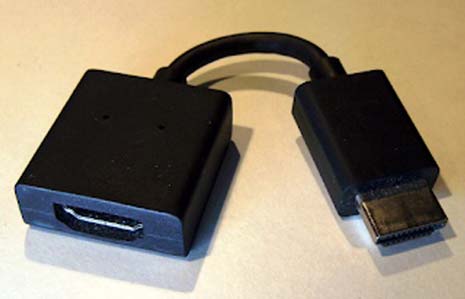Friday 2nd February 2024

In most remote setups, a computer (Desktop or Laptop) plays a vital role. If you’re in a creative field, you will also need a monitor. Even if you don’t use a monitor, you will have a TV to work as a monitor.
For either of them, you need visual connectivity that comes from either HDMI or Display Port cable. Which begs the question - which one is a better choice?
As a working professional, you might want to invest in a visual cable that can be your jack of all trades. You won’t want to switch it continually from work to entertainment purposes. So, by understanding different investments and budgets, here’s a quick guide to help you select between HDMI or DP Cables.
The Versatility of HDMI
If you plan on establishing a remote home environment that you can also utilise for home entertainment, an HDMI is usually a better choice.
It has undergone several improvements to offer budget-friendly performance. Here are a few key points to note:
- An HDMI cable can easily support up to 4K HD Resolution. Premium-end HDMIs can support 8K and even 16K. However, they tend to offer lower refresh rates.
- HDMI offers audio and video output in a single cable. You don’t have to connect audio cables separately.
- HDMI ports and cables are universally compatible. You can find them in Laptops, Projectors, and even modern phones that support connectivity to HDMI with the right converter (or adapter).
- HDMI cables are also more easily available in a wide range of quality, brands, and options.
So, if you plan on using your TV as a monitor or for work, HDMI is a better choice. However, you can also use it for the monitor or in setups where you might want to switch HDMI often to connect different devices.
From a sustainability point of view, HDMI cables offer holistic connectivity and a better approach to things. Therefore, it is a better choice in terms of versatility, especially if you use multiple display-oriented devices.
The Specialization of DisplayPort
If you’re strictly looking for a workplace setup and don’t want to compromise on performance, DisplayPort Cables from RS Group are better.
Moreover, if you truly want to reap the 4K and other Ultra HD Resolutions and high refresh rates from your workstation, then DisplayPort is definitely a great choice for the following reasons:
- A DisplayPort Cable supports higher bandwidth and data transmission, which can surpass HDMI in supporting resolutions. Moreover, you won’t have to compromise on refresh rates for the same level of performance.
- Daisy Chaining allows you to connect multiple display devices by using a single cable. So, if you use more than one monitor or multiple displays, it is a better choice for the remote workstation. Correlatively, it reduces electronic waste as you don’t need too many cables.
- Adaptive Sync and accurate colour rendering are pivotal in many graphic-intense workplaces. DisplayPorts offer such capabilities for smoother operations.
However, one drawback of most DisplayPorts is the lack of audio support. As they primarily focus on visual output, most lack audio support. The drawback is balanced by the energy-efficient performance of DisplayPorts.
The Bottom Line
If you want a multi-purpose and versatile option, HDMI is a better choice.
It eliminates the requirement to invest in multiple display connections and reduces electronic waste and carbon footprint. However, if you want a specialised workstation for graphics and high-productivity work, then DisplayPort is better.
|
OTHER STORIES
|